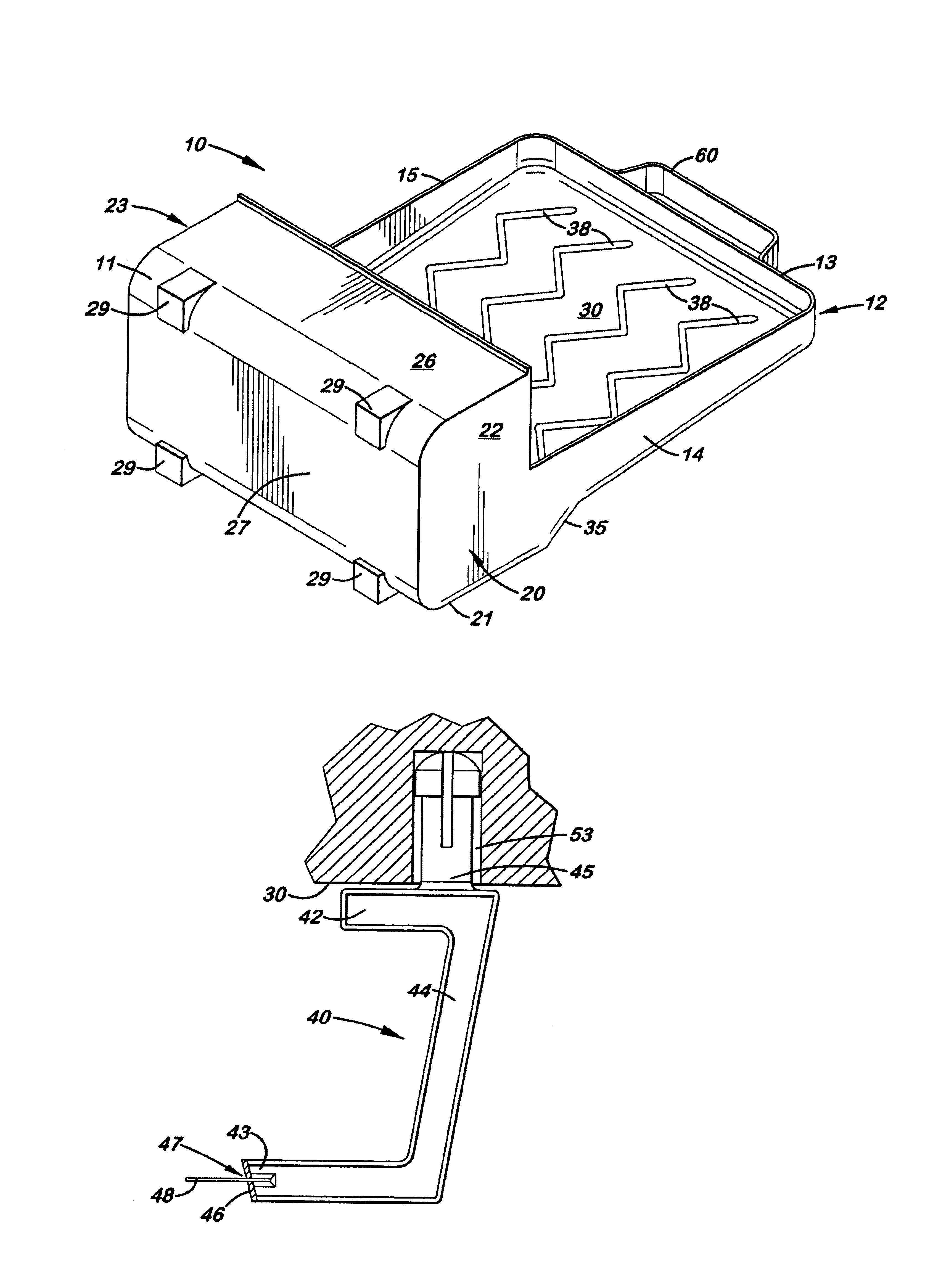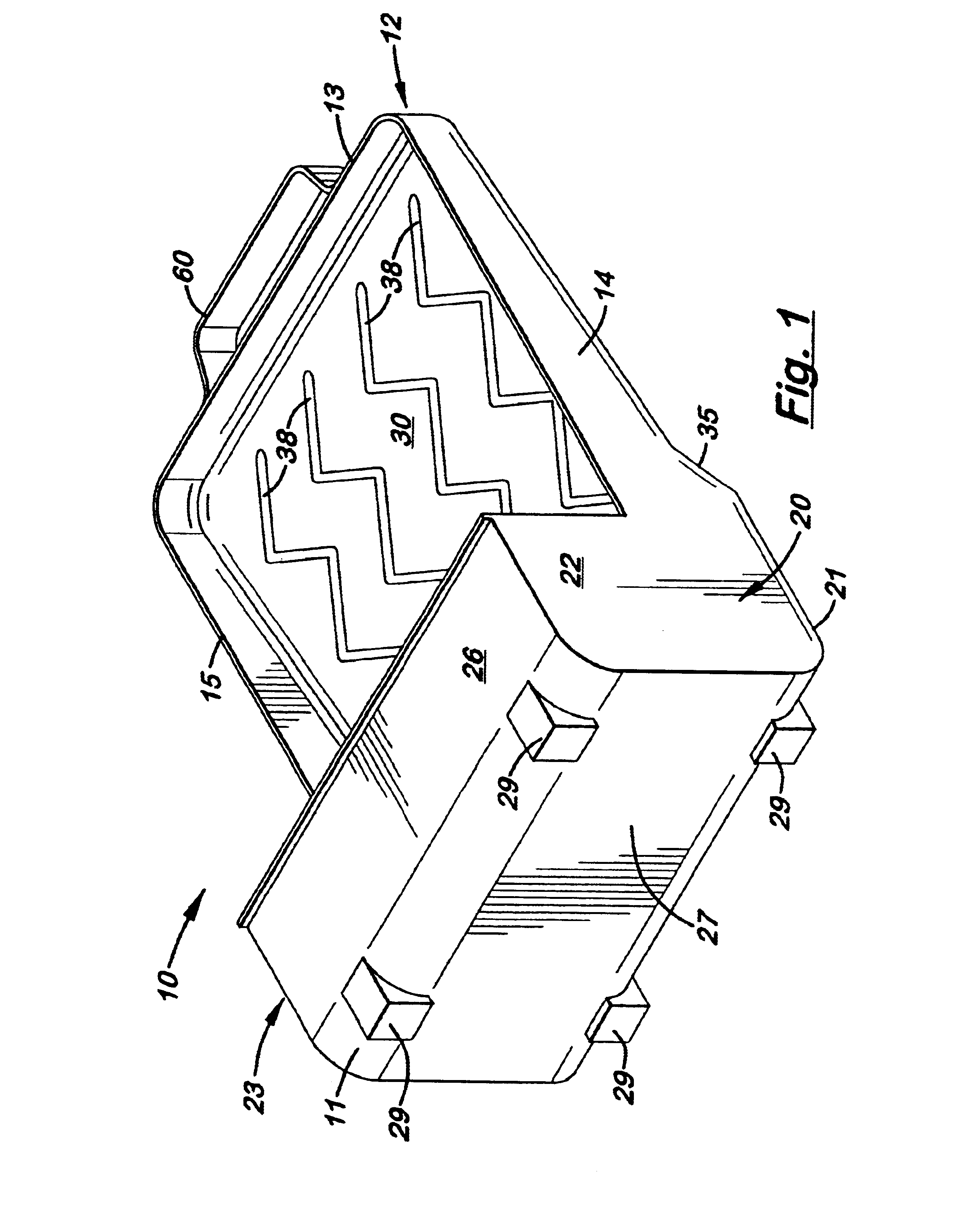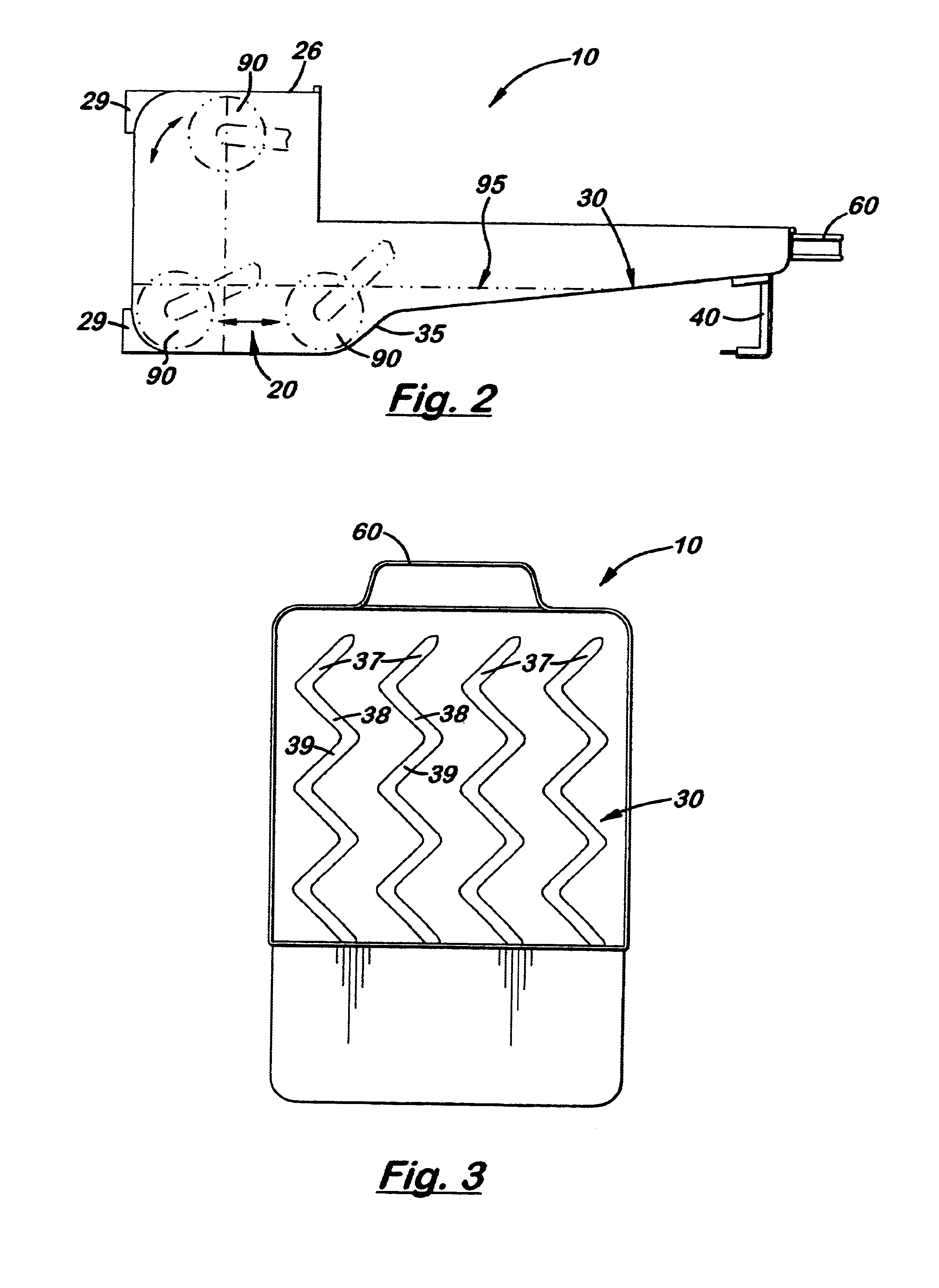Multi-positional paint tray
a paint tray and multi-position technology, applied in the field of paint trays, can solve the problems of difficult user to fix the paint tray in a vertically disposed position, the paint trays are notoriously unstable, and the use of standard paint trays on a stepladder is generally regarded as unsa
- Summary
- Abstract
- Description
- Claims
- Application Information
AI Technical Summary
Benefits of technology
Problems solved by technology
Method used
Image
Examples
Embodiment Construction
)
Referring to the accompanying FIGS. 1-9, shown and described is a paint tray 10 that can be used in both horizontal and vertical positions, to apply paint 95 from a roller 90. Formed along the distal end 11 of the tray 10 is a partially enclosed basin 20 that includes an end wall 27, two opposite sidewalls 22, 23, a bottom wall 21, and a top wall 26. The top wall 26 extends rearward, partially covering the bottom wall 21. The inside corners between the end wall 27 and the bottom and top walls 21, 26, respectively, are gently curved thereby enabling a roller 90 to continuously roll and pick up paint 95 located in the corners. Located on the distal end 11 of the tray 10, on the outside surface of the end wall 27, are feet projections 29 that enable of the tray 10 to stand upright in a vertical position on a support surface.
Formed inside the paint tray 10 is an inclined surface 30 designed to return excess paint 95 to the basin 20. As shown in FIG. 2, the bottom wall 21 on the basin 2...
PUM
 Login to View More
Login to View More Abstract
Description
Claims
Application Information
 Login to View More
Login to View More - R&D
- Intellectual Property
- Life Sciences
- Materials
- Tech Scout
- Unparalleled Data Quality
- Higher Quality Content
- 60% Fewer Hallucinations
Browse by: Latest US Patents, China's latest patents, Technical Efficacy Thesaurus, Application Domain, Technology Topic, Popular Technical Reports.
© 2025 PatSnap. All rights reserved.Legal|Privacy policy|Modern Slavery Act Transparency Statement|Sitemap|About US| Contact US: help@patsnap.com



